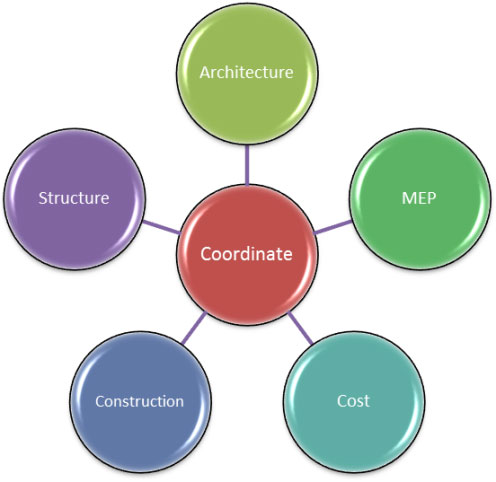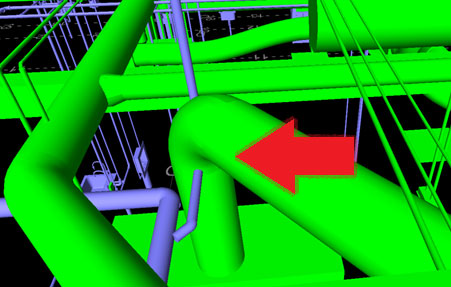Today we live in an information-rich world. A traditional 2D drawing to BIM is the hardback encyclopaedia to Wikipedia or even Web 2.0. The text is comforting and familiar but lacking in depth and perspective – we know we're only getting part of the story.
Intuitively BIM makes sense, the benefits being particularly clear to owner operators like government organizations with the long term use of a facility, and its multifaceted data central to a build project.
An evolutionary step change is taking place. Slide rule at the ready, we are doing battle with antiquated and inefficient processes involved in building design and construction. There is much to gain.
As with any project, the goals and objectives must be set out at the outset. Is the BIM process to deliver a detailed cost model? Is this model to be used ultimately with facility management? Effective planning is essential.
All members of a project team from client to builder must understand what is to be achieved in totality, at key project stages and even on a weekly basis for team coordination.
To bring together the information and engage in BIM, effective and coordinated collaboration is essential. The BIM environment of databases, models, and interfaces is highly structured. Time and effort placed in planning the BIM processes upfront, determining relationships and interdependencies, is well rewarded throughout the life of the project.
Design coordination in the digital age requires more than a friendly latte with the architect. Regular data exchange keeps the team working from the same basis. Few project teams are able to work from a single model due to size of files or location of team members.

The virtual building comprises many different elements. The main models are typically divided along traditional lines of architecture, structure and services, though this depends on the team member's roles and the size and type of the building. Each of these models may then in turn be divided into smaller pieces for ease of handling, such as façade and cores or mechanical and electrical.
With a snapshot of the design available at any time from the central coordinated model, other members of the project team can step in to contribute or extract information.
Collaboration is not limited to the design team, and the use of BIM processes is growing and varied.
Augmented reality has stepped out of Minority Report and landed in the design office. With an engaging virtual environment at hand, end users and other stakeholders can step into their new office, school or home. Wandering the office with an iPad outstretched may not be a mere amusement, but actively immersing in this virtual building.
I myself look forward to meeting my client in this virtual world to discuss what they want for the virtual meeting room we are standing in, or approving equipment in-situ in the virtual built environment. Red or blue pill? It once was science fiction.
Engineered success
BIM has brought the black art of building engineering out into the light of day. If it's achieved nothing else, it makes pipes, ducts and steelwork attractive and accessible.
Humour aside, it's quite apparent that a 3D model communicates the end result like no single line diagram ever could. That alone is a great benefit to the engineer, their client and the team.

Coordination between designers or trades is enhanced by clash detection techniques provided by BIM software which form part of regular coordination of models. Early on the design rules are more relaxed, tightening up as detail and accuracy increase. The ability to detect conflict between whole models in an automated and regular fashion means that issues are raised and resolved promptly. The same level of detailed coordination is traditionally only achieved at major project stages, potentially resulting in considerable re-work.
Many industry reports, including those produced globally by McGraw-Hill, have indicated that engineering firms have gained less, if not the least, in moving to BIM. As it's an industry wide change and all design team members on a BIM project must be using compatible software and systems, for most this is a non-issue. Perhaps only for some the question remains when.
For those early adopters there have been significant costs involved in developing standard processes, libraries of equipment and components. There is still benefit and efficiency to be gained from industry standardisation and sharing of this information through the supply chain.
The data set for a boiler, switchboard or other item of equipment needs to be able to flow from manufacture to operator and facilities manager. Similarly, the design model should transit seamlessly to the contractor or sub-contractor. As many of the smaller parties downstream of the design process are not prepared for BIM, almost all designs produce duplicate deliverables. Producing traditional 2D drawings in addition to a unified model does incur additional costs to the design team and remains an area where efficiencies could be made.
Breaking the BIM chain does risk not delivering the full potential of BIM to the end user, and in a committed BIM project this is simply not an option.

I have always had a special place in my heart for Operating & Maintenance Manuals, like only an engineer could. If an installation is not documented, then it might as well have not been completed, in my mind. That said, I think many owners feel the same.
The attention to detail, coordination and documentation that is paid to a building design with BIM has the ability to produce a real environment to satisfy owner, occupant and a fastidious engineer alike.


